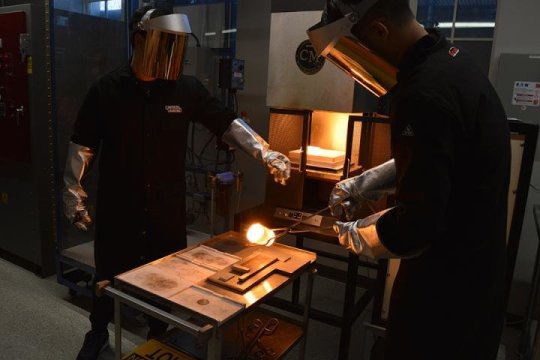[ad_1]
A new composition of germanosilicate glass created by adding zinc oxide has properties good for lens applications, according to Penn State researchers. This marks the discovery of a novel glass family.
The researchers invented a new family of zinc germanosilicate glass that has a high refractive index comparable to that of pure germania glass. The samples also showed high transparency, good ultra-violet-shielding properties, and good glass forming ability, making them suitable for lens applications. They published their results in a recent issue of the Journal of Non-Crystalline Solids.
Germanosilicate glass is essential in the manufacture of optical amplifiers, waveguides, and solid-state lasers. “The motivation for the study was the need for new glass compositions that have a high refractive index while still being processable at an industrial scale,” said John Mauro, professor of materials science and engineering.
A glass’ refractive index determines its use.
“The benefit of a high refractive index is its capacity for designing low-thickness lenses,” said Ye Luo, doctoral student in materials science and engineering. In glass synthesis, however, achieving a high refractive index typically has a few roadblocks. Lead oxide can accomplish this, but it requires the use of toxic raw materials. Non-lead constituents that encourage a high refractive index can make the glass much more difficult to form, or prone to crystallization and therefore more opaque. By finding the optimum balance of zinc oxide with the other components of the glass composition, the researchers avoided these issues.
Zinc oxide showed UV shielding properties in the study samples. This should not be surprising, Mauro said, given that inorganic sunscreen is based on zinc oxide. With UV shielding, a zinc-oxide-containing glass could be used for everyday applications such as car windows or eyeglasses.
The glass samples also showed favorable forming properties. As a “long glass,” the new compositions can be formed over a broader temperature range, making them much simpler to manipulate during formation. This property, the resistance to crystallization, and the lower cost of zinc oxide compared to germania all make this new glass composition a practical choice for manufacturing on a mass scale, the researchers said.
Story Source:
Materials provided by Penn State. Note: Content may be edited for style and length.
[ad_2]















